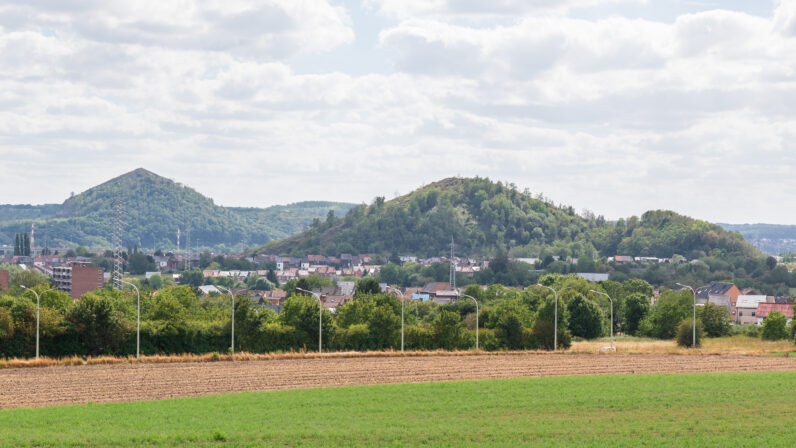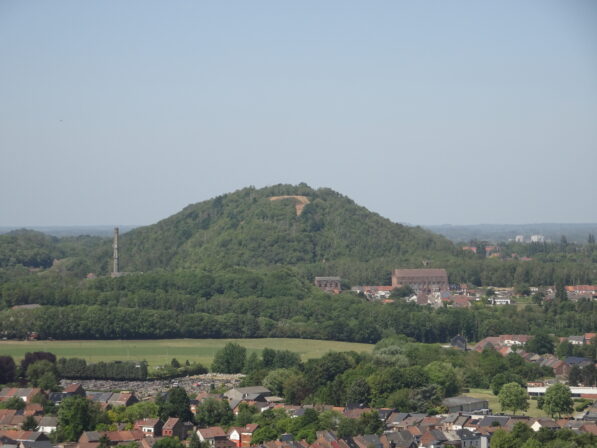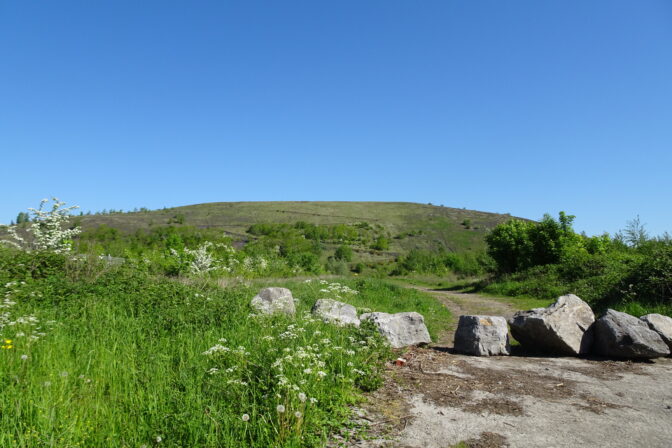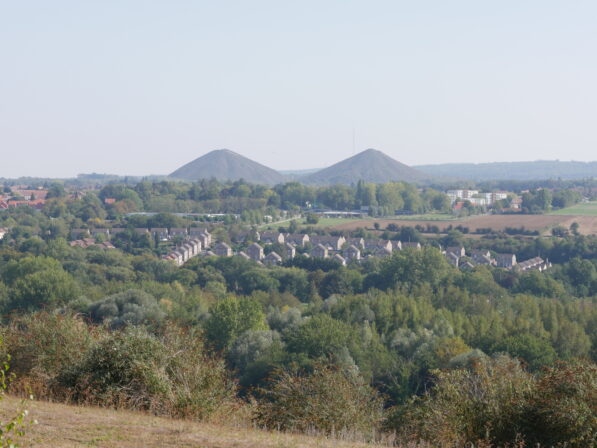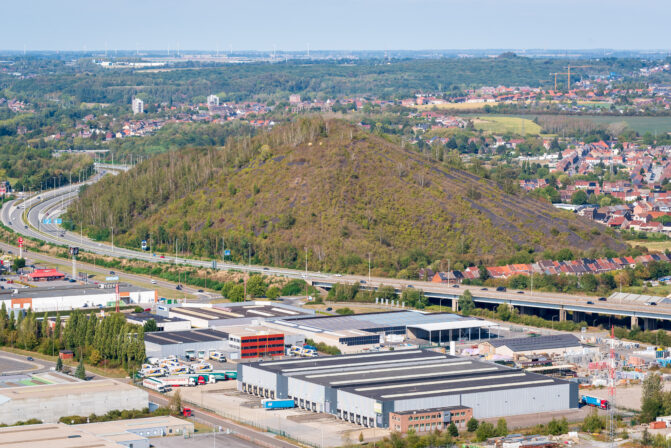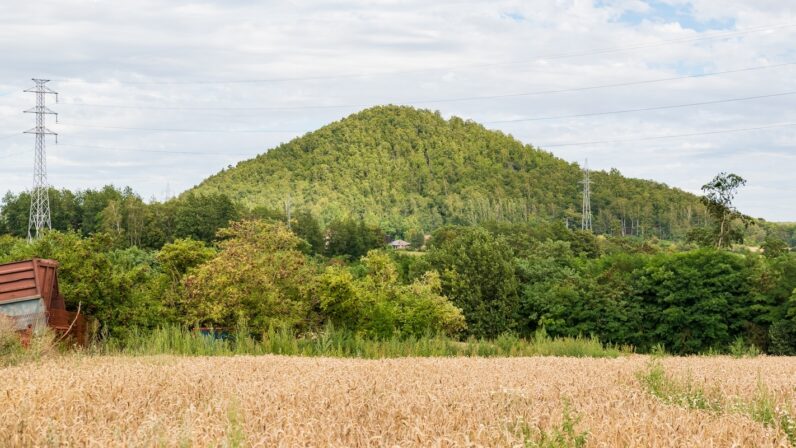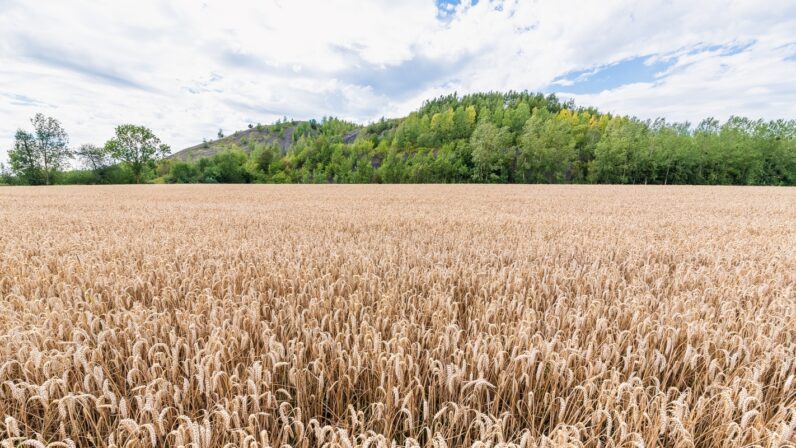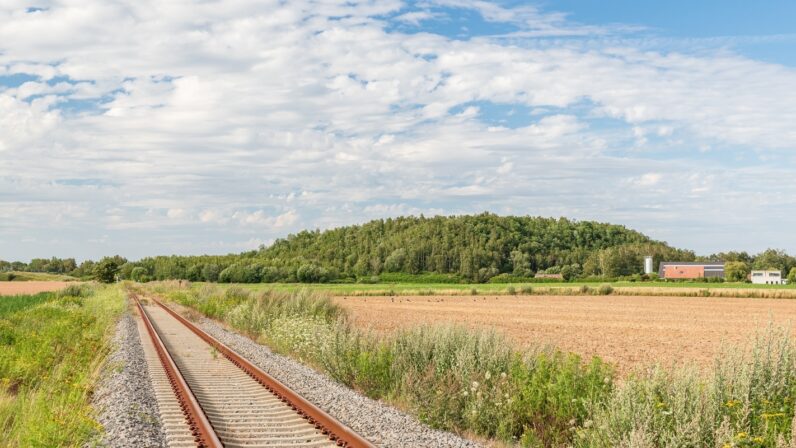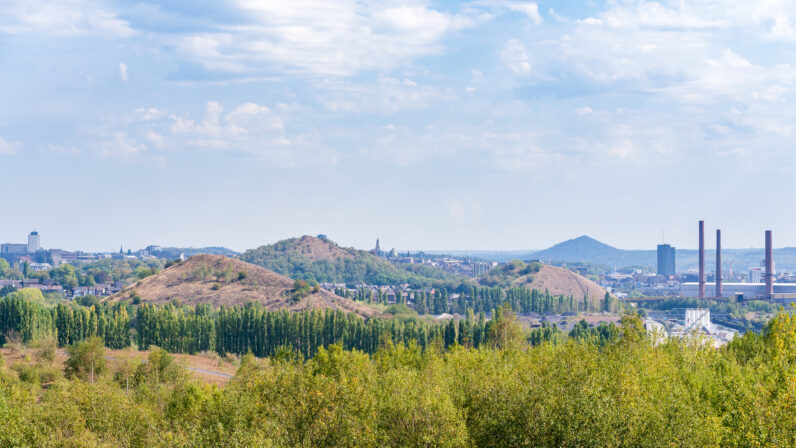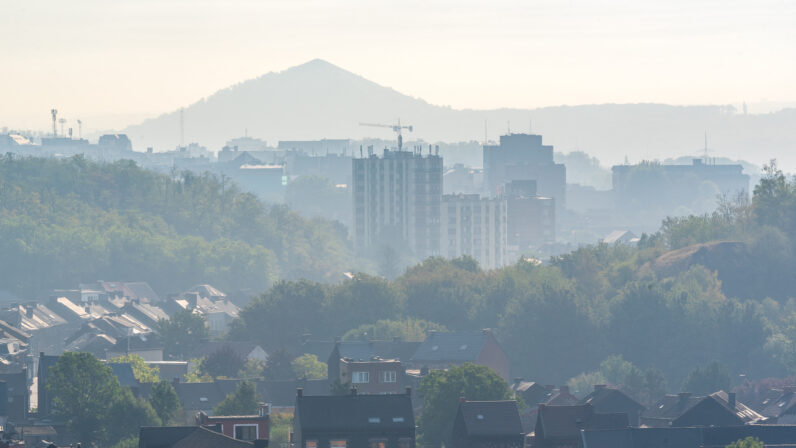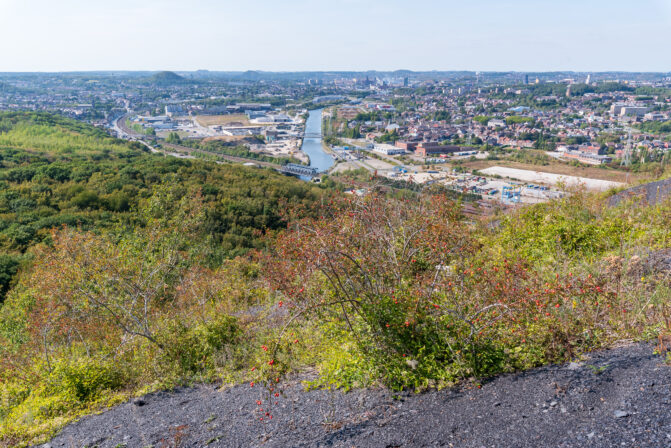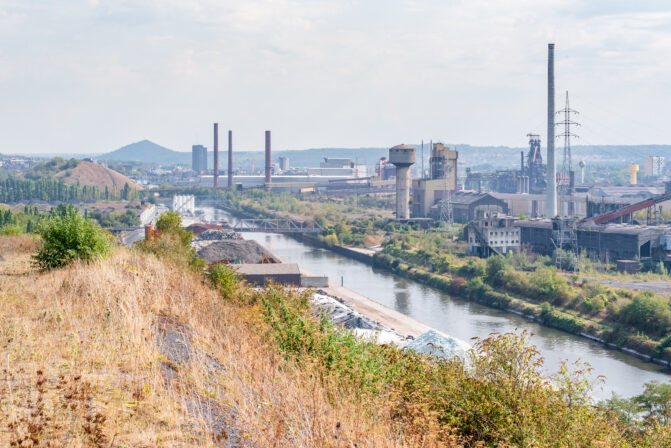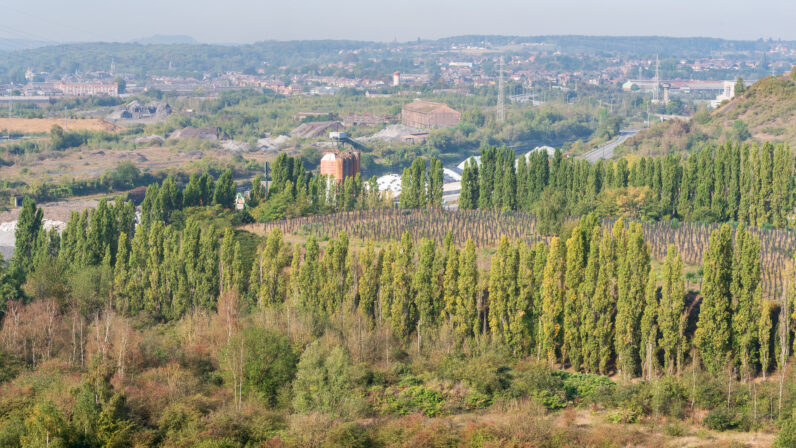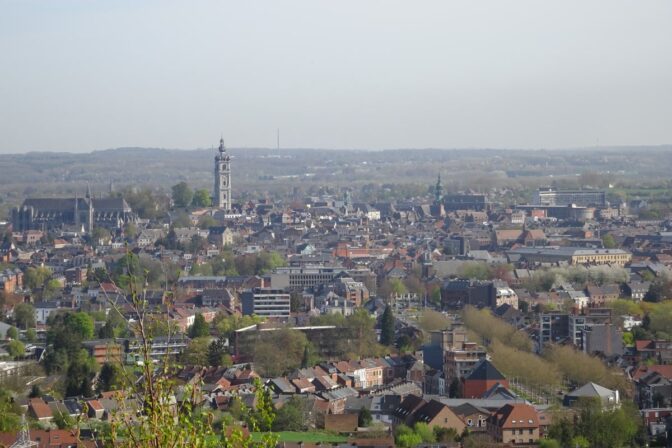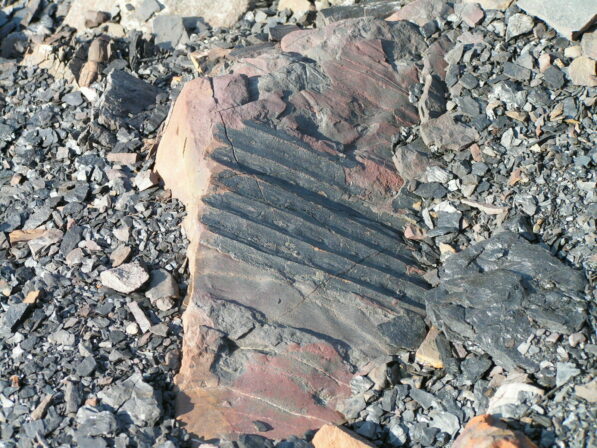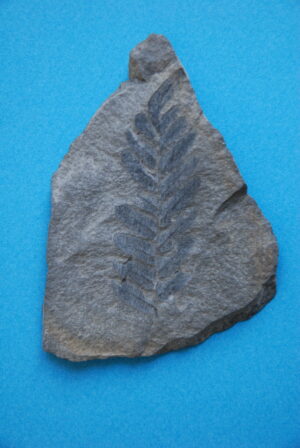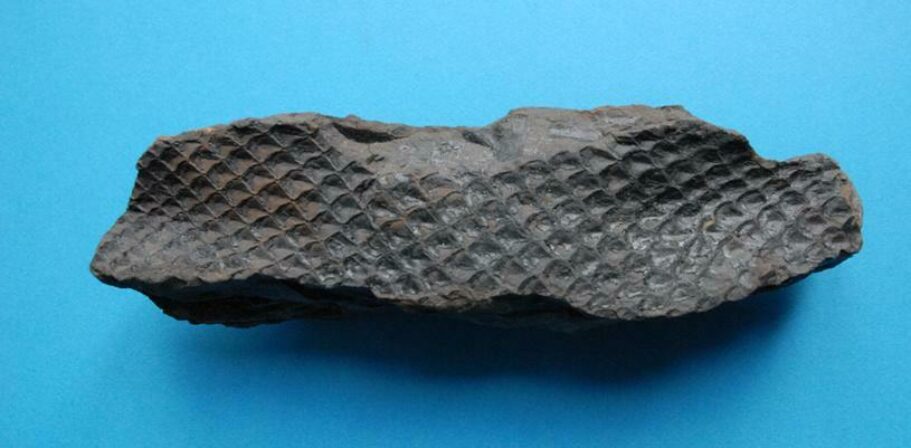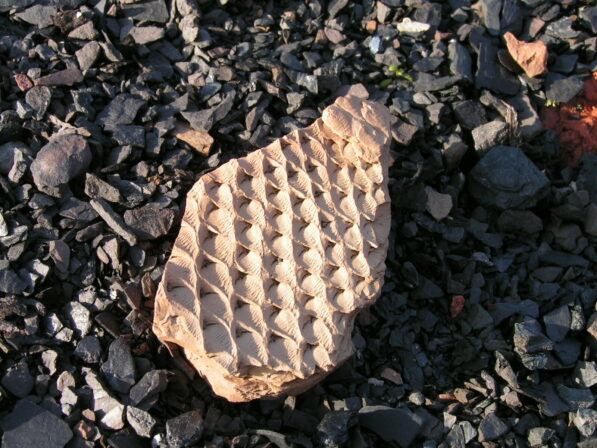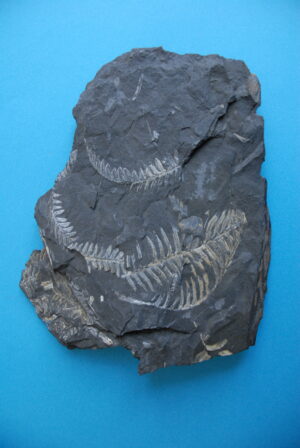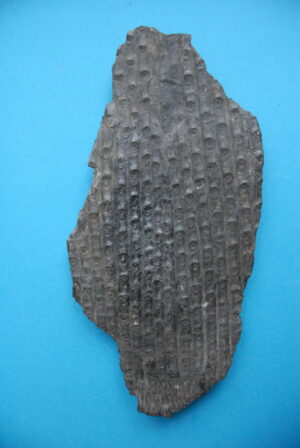
10 facts about the slag heaps !
#1 What is a terril ?
Terril is the local word for slag heap, which is pile of waste rock consisting of shale, sandstone and various waste materials resulting from underground and strip mining (used rails, demolition waste, sleepers), and even other materials such as household waste. In the past, the collieries took it upon themselves to collect the rubbish from the mining towns and then moved the waste to the margins or foot of the slag heap.
#2 It burns!
Slow combustion of a slag heap is caused by the presence of residual hydrocarbons. In the past, coal sorting was done manually and the fragments of rock were larger in size. The old slag heaps therefore contain a lot of empty spaces and carbon-rich deposits (up to 30%). These are therefore even more prone to mass combustion. This process is called self-ignition. This is caused by the spontaneous combustion of pyrite, which can burn at temperatures exceeding 1000°C. These slag heaps can burn for up to thirty years. On the surface and through cracks, fumaroles form, releasing sulphurous vapours and odours. The burning hot ground found in parts of these slag heaps poses a real risk.
#3 Islands of biodiversity
Normally occupying an intensive farming landscape or a densely populated urban area, the slag heaps have become great staging posts for species experiencing the fragmentation or disruption of their habitat. Due to the nature of their substrata and their various formations, they also make a perfect habitat for pioneer species and/or xero-thermophiles (species seeking particularly warm or cold habitats), which are relatively rare in the region. These two characteristics give the Franco-Walloon slag heaps a unique biodiversity.
#4 Public or private land ?
The situation differs on either side of the border. In France, coal mining has been nationalised since the end of the Second World War. When the coal mines were closed in 1990, the land fell under the jurisdiction of a single owner: Charbonnages de France (Coal Mines of France). Naturally, the presence of a single representative facilitated negotiations on the future of the slag heaps. As a result, large and small local authorities have been able to negotiate acquisitions, ensuring public access to almost all of the sites. This played out differently on the Belgian side of the border, where coal mining was carried out by many different private companies, with very little interaction with the public sector. As a result, negotiating acquisition of the land was far more difficult.
#5 All (i)cones ?
The most iconic slag heap is the conical slag heap. Its legendary
triangular shape stands out with its steely-grey colour, enduring in the
landscape and in our minds. In fact, the slag heaps can be found in
many forms, depending on their era and location. Some are indeed
conical, but many are also flat, tabular or mixed.
Photo gallery
#6 Danger... area at risk!
With the passing of time and as a result of years of abandonment, nature has finally reclaimed the slag heaps. New forms of life have emerged on these wastelands, in contrast with the surrounding urban or agricultural environment. These islands of biodiversity are rare gems to be cherished. The gradual reappropriation of the slag heaps by locals and tourists is therefore not without its consequences on the fauna and flora. It is important that we find a balance and respect it in order to continue to enjoy these sites responsibly.
#7 Industrial heritage just a stone's throw away
Some slag heaps have remained untouched since the mine closures. Some of the sites remain partially intact. Loading ramps (now without rails but with some surviving concrete sleepers), metal guardrails, cable car tower foundations, etc. can still be seen along the flanks or edges of the sites. These physical remnants are rare, however. Some recent initiatives have tried to reproduce or artistically represent some of these now absent elements, helping to recapture the magic.
#8 Wow, what a view!
The relative flatness of the area often makes it difficult for us to admire our landscape. The slag heaps have become great viewing points to admire our natural heritage. Whatever their height, the slag heaps never fail to surprise visitors with breath-taking panoramic views of the region. Visitors can have fun identifying the different landmarks: bell towers, belfries, industrial sites, windmills, roads, and even... neighbouring slag heaps.
These hills are also perfect spots from which to get a clear bird's eye view of the Slag Heap Trail: from the summit, you can often spot a chain of more than ten slag heaps in a row. See it for yourself, it's well worth a visit!
Photo gallery
#9 Walking routes and outdoor activities
People often think that the slag heaps are only useful for heritage or nature walks. But that’s not even the half of it! Who would have thought that you could find a ski station in the north of France? This has been the case at Noeux-les-Mines since 1996, at an altitude of 119 m. Although it’s hardly an impressive mountain range, it has all the facilities you need: a ski lift and an artificial slope with moguls for a more dynamic feel.
For a more classic day out, swimming has also been possible since the 1990s on the Argales slag heap at Rieulay. A sandy beach has even been added.
The 1980s saw the rise in popularity of outdoor sports, such as mountain biking or land sailing. But it is paragliding that has become the top choice on the slag heaps: enough altitude to ensure take-off and off you go for a short but breath-taking flight over the mining landscape.
#10 Flowers between the stones or flowery stones?
If you pay close attention to the ground around you, you might spot flower, leaf or branch imprints or interesting patterns on the rocks of the slag heaps.
These are plant fossils of ancient, now extinct, species which made up the vast swamp forests of the Carboniferous period 325 million years ago.
Most of the plants from this period decomposed without leaving a trace.
However, a small portion of these plants, trapped in fine sediment, gradually mineralised as the sediment solidified, a process lasting millennia; a few of these left their imprint in the rock.
Animal fossils are a much rarer sight on the slag heaps, although a few insect fossils were recently found on a slag heap at Avion.
Remember! However tempting it may be, it is forbidden to take fossils or rocks from the slag heaps: unlike flowers, they do not grow back!
